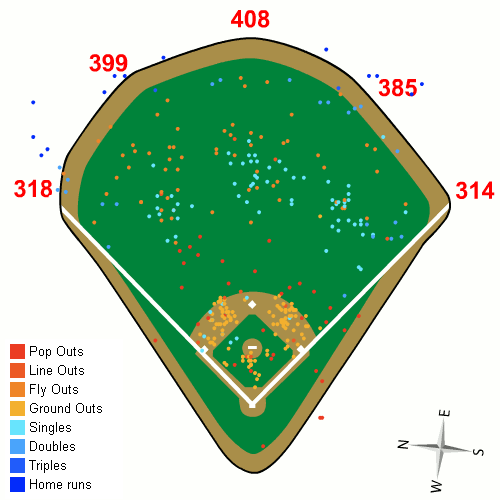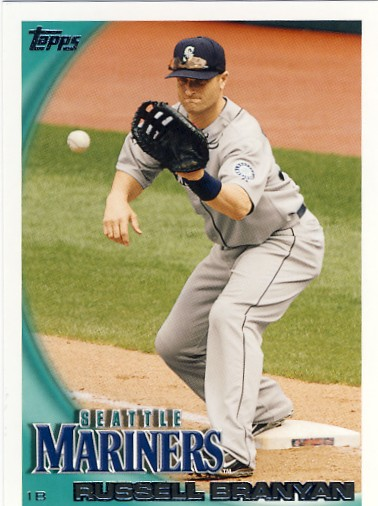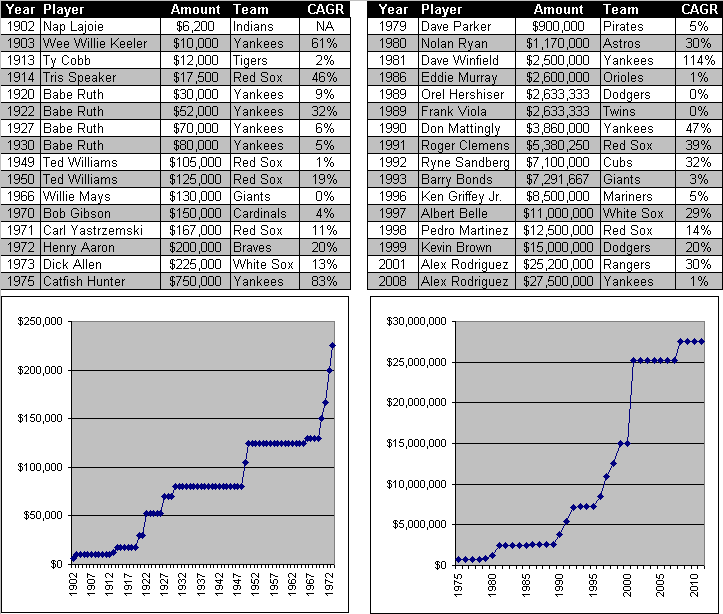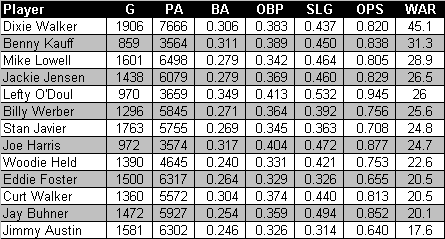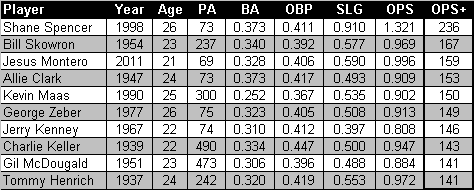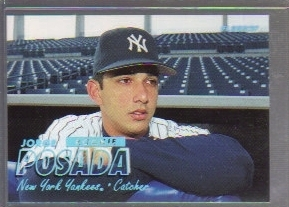Before we jump whole hog into spring training, let’s take a look back at the way we left things in 2012, after a seven game World Series featuring an all-time classic in Game 6.
Poised one strike away from their first World Championship the Rangers gacked both chances and lost Game 6 and then the Series.
So unbelievably close to ecstasy. Twice. Fans surely began plans for the parade as Neftali Feliz offered to David Freese, wrecked them, revived them, and then wrecked them again in a matter of minutes. Nelson Cruz misplayed Freese’s two-out, two-strike flyball into a game tying triple. Josh Hamilton reestablished the two-run bulge, only to watch Lance Berkman’s two-out, two-strike single tie the game again in the tenth. Freese homered to win it in the bottom of the next inning.
The Rangers jumped out to another two-run lead to start Game Seven, but by this point they should have realized that two-run leads were just making the Cardinals angry. The Cardinals erased the lead and stormed ahead to their eleventh title.
![sad baseball[1]](http://www.bronxbanterblog.com/wordpress/wp-content/uploads/2012/02/sad-baseball1.jpg)
It’s the saddest of all losses, for me anyway, to be so close to success, only to have it slip away. Miserable. Horrible. Indelible. But not, as it turns out, uncommon.
Twenty one World Series have featured a team on the cusp of winning a ring, leading the potentially deciding game (OTC games from here on, for On The Cusp), only to lose the game and the Series. The losing team held that lead with six or fewer outs to go eleven times. Two losers whittled immortality down to a single, slender strike.
Here are the worst losses of all time, according to me. It’s a reminder that the brightest lights of baseball history for some cast out some of the darkest shadows for others.
Let’s get the Yankees out of the way first. As bad as these losses were, even in the throes of despair, we wouldn’t have traded places with any other fans of any other team in any other sport in the history of the universe.

In Game 7 in 1960, the Yanks led the Pirates by three with six outs to go to claim the title (and reached a 94% win probability, the fourth highest of all time for a losing team), but the Pirates capped a five run outburst with a two-out, two-strike, three-run homer to take a 9-7 lead into the ninth. The Yankees did manage to tie, but lost on the famous Mazerowski death blow. Devastating to be sure, but if any team and fan base could be insulated from a loss like that, it was the 1960 Yankees who had won eight of the previous twelve titles before the loss and would win the next two afterwards.
The 2001 World Series, for so many of us here on the Banter, was the worst loss we’ve ever experienced. Hard to recall that night and believe there were many worse fates on a baseball field. But for me, the Yanks never seemed likely to win. The lineup appeared to be broken beyond repair and Andy Pettitte allowed fifty runs in their first shot at it in Game 6. In Game 7, the Yankees bundled an improbable 2-1 lead to Mariano, thanks to Soriano, Clemens and a nifty relay to third. Mariano had good stuff in the eighth, but in the ninth, things went off the rails immediately. Because of the slim lead and Mo’s error on the bunt, the Yanks win expectancy never got higher than 82%, which isn’t even in the top ten of all time OTC losses.
The first team to lose the World Series in a truly heart wrenching fashion was the 1912 New York Giants. They approached Game 8 of the series (Game 2 had ended in a tie) with Christy Matthewson on the hill and confidence high. Matty coughed up two late leads. In the seventh, he allowed a two-out pinch-hit double which tied the game at one. Then leading by a run in the tenth, his centerfielder dropped a ball and Matty couldn’t recover. The Giants, who reached a maximum of 85% win expectancy (WE), got within two outs, but like the Yankees in 2001, this deciding inning never looked secure. Tris Speaker tied it with a single to right and the ill-advised throw to the plate set up the winning sac fly.
![400px-Christy_Mathewson,_New_York_NL_(baseball)_(LOC)[1]](http://www.bronxbanterblog.com/wordpress/wp-content/uploads/2012/02/400px-Christy_Mathewson_New_York_NL_baseball_LOC1.jpg)
The fallout was extreme for one man – Fred Merkle stood in Soriano’s position during the 2001 Series, about to be the hero with a go-ahead hit prior to the meltdown. Instead, Merkle is now only known for the time he failed to touch second base in the 1908 pennant race. I’m sure he’d have liked to add a “slash hero” to his boner.
The Giants also pop up as the second team to lose with victory close at hand. In 1924, up three games to two, they led Game 6 of the Series in the fifth but couldn’t hold on. They then rebounded and took a two-run lead into the eighth of Game 7, but blew it when Bucky Harris tied the game with a two-out, bases loaded base knock. The Giants stranded a lead off triple in the ninth, and lost in the 12th. Walter Johnson pitched four scoreless in relief for the win for Washington.
![Walter_Johnson[1]](http://www.bronxbanterblog.com/wordpress/wp-content/uploads/2012/02/Walter_Johnson1.jpg)
The Big Train was in the station again the following year, taking the ball in the Game 7, but with the opposite result. The Senators bats were ready to repeat and staked him an early four spot, but Johnson gave it all back. He held a 6-4 lead in the seventh, and blew it. He held a 7-6 lead with two outs and nobody on in the eighth. And again, he gave it away. Consecutive doubles tied the game and then a walk and an error by his shortstop extended the inning for Hall of Famer Kiki Cuyler, who dealt the telling stroke with a two-run ground rule double. It was the 15th hit off a spent Train.
The Senators never won again, so that sucks. And they have the distinction of being the only team in history to lead three OTC games, and to lose them all. They kept getting closer, 20 outs away in Game 5 (66% WE), 19 outs in Game 6 (71% WE) and then four outs in Game 7 (85% WE) only to blow it each time.
Walter Johnson, Christy Matthewson and Mariano Rivera figure in the worst losses of all time. A rotten occasion, but good company nonetheless.
The 1985 Cardinals were two outs away from winning the World Series, and should have been only one out away. Don Deckinger’s infamous blown call to start the ninth set up an inning from hell for Todd Worrell. Much like Mariano in 2001, he almost righted the ship when he nailed the lead runner at third on a sac bunt attempt to leave runners at first and second with one out, but Daryl Porter gave up a passed ball to undo that good work. Dane Iorg delivered a game winning, pinch hit single.
The Cardinals held a 3-1 series lead in 1985, but they never led in Games 5 and 7. They reached a WE of 84%.
What’s left? I’m sure you can guess. The 1986 Red Sox, the 1997 Indians, the 2002 Giants and the 2011 Rangers. Each team was plagued by significant title droughts. The Giants had never won since abandoning New York, the Indians were such a living joke that, like the Senators in the 1950s, they could only win in fiction, The Red Sox made otherwise sane people believe in curses, and the Rangers, while lacking in historical collapses, had, unlike the other teams, never, ever won one.
I’m going to put the 1997 Indians fourth here. The long-suffering fans of Cleveland had not celebrated anything since a Browns championship in 1964. Lebron James was only 13 years old, and perhaps already rooting for the Yankees. They led Game 7 against the Marlins 2-1 and had a chance to increase the lead in the top of the ninth. Big Jim Thome could not drive in Roberto Alomar from third with one out (WE peaked here at 89%) and the one run lead didn’t budge.
Closer Jose Mesa came on in the ninth and went single, whiff, single to set up the tying sac fly. The Indians didn’t threaten in extra innings and Renteria won the game with two outs in the eleventh.

I know this was hard to take in Cleveland, but I don’t believe many Indians fans were sure of victory. First of all, they only had 86 wins and had to beat far superior teams in the ALDS and the ALCS. Plus, Mesa had blown two games already in that same Postseason. I’m not sure any Indian fan’s stomach was settled when he took the ball. These were not the 1954 Indians.
Those guys lost to the Giants, who happen to also own the third worst loss in history. In 2002, the Giants were looking at a championship drought just about as long as those 1997 Indians (48 years vs 49 years). In 2002, with Barry Bonds putting on a Ruthian display of dominance, they came to the brink. With a 3-2 lead in the Series, they led Game 6 by five in the seventh. That was good for a WE of 97%, second highest of all time for a loser.
Russ Ortiz got one out before two singles in the seventh. Dusty Baker decided to go to the bullpen, but as Ortiz left the mound, Baker gave him the game ball. From Little League up on through to the Show, back to down to beer league softball, I’ve never even heard of someone doing that. (Unless it was a record, or a first MLB hit or whatever, but that’s not the same). Felix Rodriguez came in and allowed a three run jack to Scott Spezio.

Baker finally got out of the seventh with Tim Worrell, but he did not go for the kill in the eighth with Robb Nen. He let Worrell get in deep trouble first. (If you haven’t had enough Yankee misery, this inning reminds me a lot of Game 5 in the 2004 ALCS when Torre let Gordon put the game in inescapable jeopardy instead of going for the kill with Mariano.) Worrell let up a bomb and two hits and Nen came in for a really tough save. He couldn’t get it. He let up a go ahead double to Glaus.
The Giants took a brief lead in Game 7, but the Angels equalized in the same inning. Garret Anderson’s bases clearing double in the third was all the Angels would need for the Series win.
The 1986 Red Sox and the Rangers have the last two spots and it’s up to you how you want to rank them. I put the Red Sox misery ahead of the Rangers. The Red Sox were 68 years deep in an 86-year drought. The Red Sox fan base let itself believe that fate was against them, refusing to put proper accountability on the players and the management. The Red Sox came the closest to winning without actually winning, attaining a 99% WE at 5-3 with two outs and nobody on in the tenth inning of Game 6. And that after blowing 79% WEs in the fifth and seventh (a 2-0 lead and a 3-2 lead). The Rangers got to 96% in the ninth and then blew it. They scaled back up to 93% with Josh Hamilton’s tenth inning blast. Then they blew that.
If we just left it there. I think it’s a slight edge to the Sox. Each team got within one strike of winning the World Series. Twice. (Knight and Wilson in’86 and Freese and Berkman in ’11) Even after putting the outcome in doubt, the Red Sox were down to a final strike on Mookie Wilson. Bob Stanley uncorked a wild pitch to tie the game. Bill Buckner did his thing for the winning run. Two devastating, rapid fire body blows. The Rangers big play was the two-strike Freese fly ball. Would have been caught by most right fielders. Maybe even should have been caught by the hobbled Cruz. But a guy reaching for a ball he can’t quite reach won’t live on in the same kind of eternal infamy as the ball trickling through Buckner’s legs.
And Lance Berkman is a borderline Hall of Famer with an incredible track record. Mookie Wilson was just OK. Berkman got a clean hit. Mookie, well, you know…didn’t.
But maybe that’s splitting hairs. No matter, the real separation comes in Game 7. The Rangers took a lead, but blew it immediately. The Cardinals controlled the game from there. 1n 1986, the Red Sox took a 3-0 into the sixth inning. They had a WE of 88% in that inning, by itself the seventh highest perch from which a team has fallen. And it all came crashing down a second time.

I don’t konw what misery would do without all that company.



![1524_0040im_2006-03-09[1]](http://www.bronxbanterblog.com/wordpress/wp-content/uploads/2012/03/1524_0040im_2006-03-091-1024x682.jpg)
![215th-Street-Stairs-2010[1]](http://www.bronxbanterblog.com/wordpress/wp-content/uploads/2012/03/215th-Street-Stairs-20101-1024x768.jpg)
![215th-Street-Stairs-August-29.1915-New-York-Herald[1]](http://www.bronxbanterblog.com/wordpress/wp-content/uploads/2012/03/215th-Street-Stairs-August-29.1915-New-York-Herald1.jpg)
![215th-Street-Steps-in-1916.[1]](http://www.bronxbanterblog.com/wordpress/wp-content/uploads/2012/03/215th-Street-Steps-in-1916.1.jpg)







![tournamentBracket[1]](http://www.bronxbanterblog.com/wordpress/wp-content/uploads/2012/03/tournamentBracket1.jpg)
![cinderella324[1]](http://www.bronxbanterblog.com/wordpress/wp-content/uploads/2012/03/cinderella3241.jpg)







 The late Gary Carter never played a game for the Yankees, a fact that should be regretful for any Yankee fan who remembers the 1980s. If Carter had played even one season in the Bronx, the Yankees might just have won a World Series title that proved so elusive during that decade of frustration.
The late Gary Carter never played a game for the Yankees, a fact that should be regretful for any Yankee fan who remembers the 1980s. If Carter had played even one season in the Bronx, the Yankees might just have won a World Series title that proved so elusive during that decade of frustration.![sad baseball[1]](http://www.bronxbanterblog.com/wordpress/wp-content/uploads/2012/02/sad-baseball1.jpg)

![400px-Christy_Mathewson,_New_York_NL_(baseball)_(LOC)[1]](http://www.bronxbanterblog.com/wordpress/wp-content/uploads/2012/02/400px-Christy_Mathewson_New_York_NL_baseball_LOC1.jpg)
![Walter_Johnson[1]](http://www.bronxbanterblog.com/wordpress/wp-content/uploads/2012/02/Walter_Johnson1.jpg)





